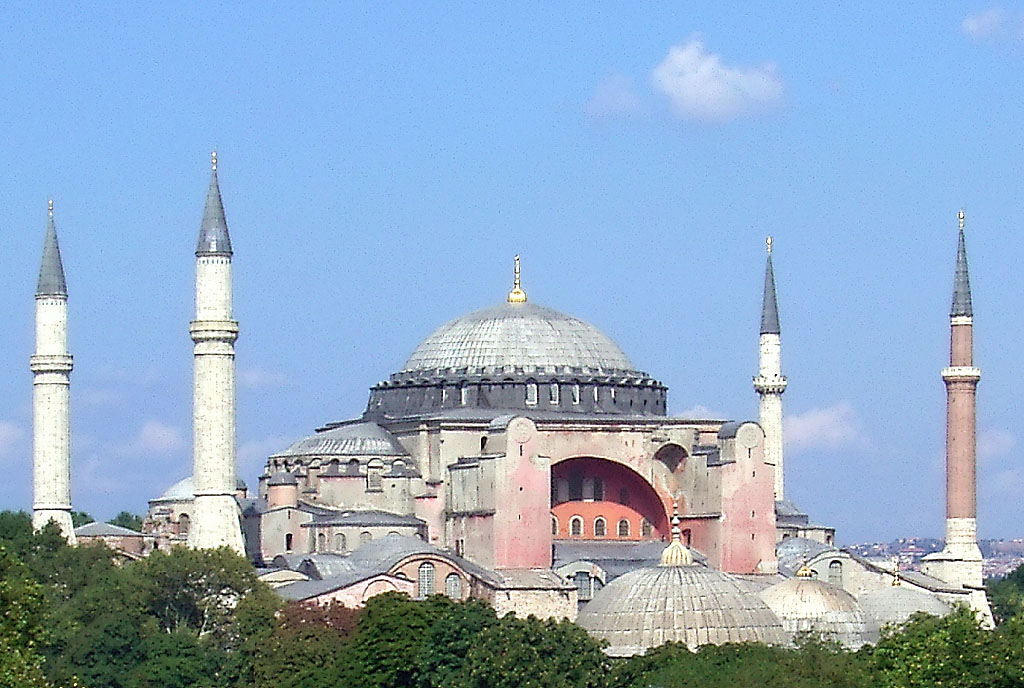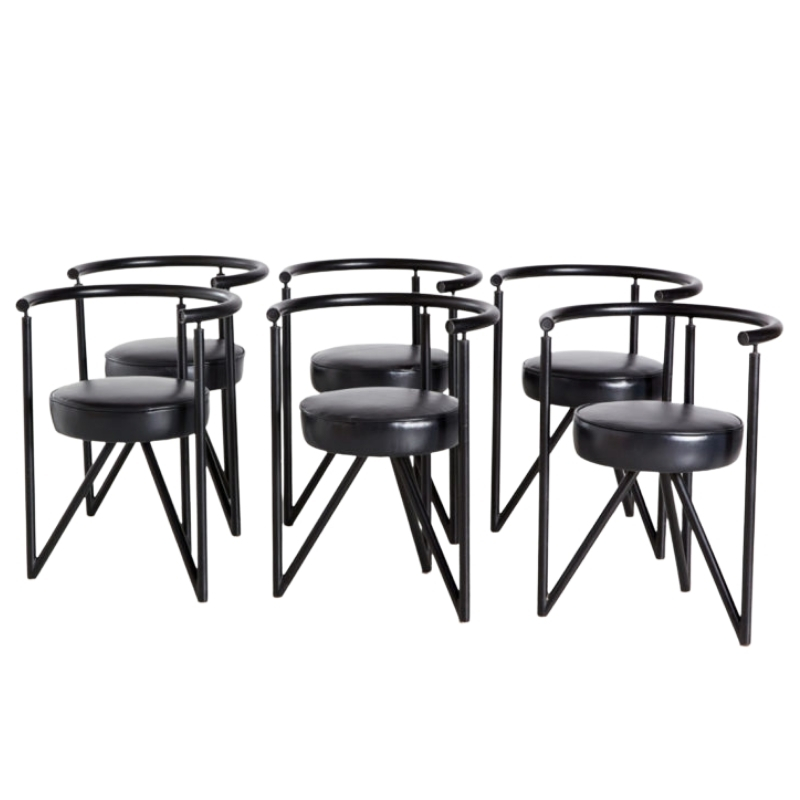I have this theory that a genuine style of American modernism that flourished in the years before WWll (Rohde, wright, etc) was pretty much snuffed after the war by the influences of european designers Bauhaus etc. and the only architect to more fully explore a truly American modernism was FLW. That's why nothing else looks like his last few buildings. Modernism became global and branched in a different direction. Old news? Baked again?
Well,
I like that. I've been following FLW and other modernisms my whole life (I'll be 64 tomorrow) and I guess I never quite saw it that way -- but I think you may have something.
Among many, Wright's late work is not as highly regarded as the earlier stuff. Which pieces do you havew in mind ?
Nice
shot of the Civic Center -- I love that golden color (this must be the western facade, in late afternoon ?)
The paper-thin quality of this building's exterior is either a frank expression of its structural realities, or an uncharacteristic abandonment of architecture as "the solid art." In any event, the result may be also an evocation of the Italian Renaissance (ever finer arcuation as the building ascends) and/or the nearest we'll get to seeing what Wright's unbuilt middle-eastern fantasies (Bagdad, etc) would have been.
None of this seems particularly American -- yet Wright's whole career was devoted (he said) to making "an architecture for the American democracy." In the end, it may be true here as elsewhere that a visual art can be understood only in visual, as opposed to verbal, terms. . .?
There's more to be learned, in any event, about your intriguing suggestion, I believe.
Marin Civic Center
I've spent a good bit of time at the Marin Civic Center as I've lived in SF for 20+ years. When I walk down the corridors around the atrium the building feels utterly modern. There's is only the faintest hint of the eclectic in the nod to the roman aqueducts in the facade. All the details of the building feel very modern but it's a modern that seems to have become an evolutionary dead end. No one else took his last ideas and carried them on successfully. His ideas and style pretty much died with him and he's been filed as a brilliant side note in the history of architecture.
I've talked to people who work in the center and they love it. Not just because it's a cool looking building but because it works, it's a good place to be in. It's fun, it's comfortable, it's logical.
I think in his later years I think Wright finally began to really consider the needs of the eventual users of his buildings. He began to think more of the needs of the actual people using the space rather than his own personal tastes or desires. I see this in the Guggenheim also.
Wright's Little d Democratic public buildings: Synthesizing with Byzantium Pt. 1
There is a Wright building in Phoenix or Tempe, maybe near ASU, that fits in with...the Marin Civic Center form language. It was finished soon after he died and it is often given the asterisk of having been finished by his associates and so is not totally a work by Wright. Its some kind of convention or convocation center, maybe even a smallish sports arena. If I recall correctly, it has some of the arch treatment the Marin Civic Center has also. I've been to both. The Marin Civic Center is a great building. The Tempe structure is not, though it is distinctive. I would include the flying saucer church in Milwaukee with these two buildings, though I don't know if the flying saucer church (was it an Eastern Orthodox or Unitarian church, I forget which?) was built late in his career or not.
Wright came from an age in America where little d democracy was considered the great national religion. Drive through any county seat town in the middle west, where Wright grew up and later lived much of the time, and you will see county office buildings grander than any church. Most of this architecture was tall and spired and a pastiche of Victorian, Gothic and neoclassical form languages. Wright seems to have been casting about for a form language for America's small d democratic forums like churches, county buildings, and convention/sports centers. He seems to have borrowed flattened domes of the Hagia Sophia tradition in the Marin Civic Center and arches from Moorish and Byzantine architectures. I always assumed he fancied the Hagia Sophia and some elements of the Byzantine form language, because these were rather striking fusions of the east and west of their worlds in their times. And who can go to the cathedral in Sienna and not wonder if Wright were at least slightly influenced by it?
Wright's Little d Democratic public buildings: Synthesizing with Byzantium Pt. 2
Wright, having been a Midwesterner (and I can vouch for this being one myself) was hard wired from youth to try to fuse east and west in America, because we in the midwest were taught to feel our midwest was considered half formed and but rudimentarily civilized by east and west coasters. And that need to finish synthesizing where you grew up carries forward into how you view the world. You feel some urge to synthesize east and west in the wider world, also.
Wright combined American forms and Japanese forms to create his houses--east and west. I always thought Japanese architecture appealed to him for houses, because Japanese architecture reflected the sensibilities of a long (only a few centuries actually) closed and inward facing culture. That culture also was strongly premised on Shinto Buddhism, which centered on the family and the individual and inner peace. For Wright, these factors seem to have formed a great composite metaphor for what he hoped an American house (a shelter from the hectic outside world) should enable AND a way to blend east and west. Further, the Japanese aesthetics had a wonderful earthiness of materials that appealed to him in houses, as well.
But Wright seems to have sought something more communally spiritual in his quest to blend east and west in little d democratic public spaces than what Japanese culture and architecture had to offer. I think he found what he was looking for in certain parts of the form languages in the Hagia Sophia and the arches of Moorish and Byzantine architecture. He synthesized these with modern western materials and technologies and his own sensibilities and produced what I believe is a great masterpiece in the Marin Civic Center, which is ultimately Wright's take on what an American County Seat building ought to look like.
Wright's Little d Democratic public buildings: Synthesizing with Byzantium Pt. 3
The problem Wright ran into is that his attempts like the Marin Civic Center and the church in Milwaukee were confused with a kind of hackneyed futurism of the kind found in Hollywood 1930s futurist/utopian films (Shangri-La in Lost Horizon, or The Shape of Things to Come), 1960s Star Trek matte paintings of cities, and Disneyland's future world. A flattened dome began to equate with futurism, not with Wright's attempt to express little d democratic spirit in the updated form language of Byzantium.
I believe Wright's Marin Civic Center is a fantasitcally profound building that quickly became mistaken for futurist kitsch. I guarranty if you think of it as a little d democratic synthesis of the Hagia Sophia and the Byzantine and Moorish influence in Spanish Mission architecture you will begin to understand the great depth and expansive vision of the mind of America's greatest architect. Americans saturated with flying saucer fantasies, Star Trek, and NASA space programs, simply misunderstood the Marin Civic Center. They saw it and continue to see it not as a secular spiritual building, but as something alien from another world that landed from the sky in between two hills in Marin County. Its viewed more or less like a flying saucer. In fact, it was Wright's attempt to express the communal spirituality inherent in little d democracy as filtered through a form language that sought to synthesize east and west in America--America being the middlewest of the world in Wright's mind.
Exquisite engineering
The byzantine vault is a fascinating engineering cul de sac of sorts. It's a late roman evolution on the barrel and dome. The engineering sine qua non of the time (500 AD) was to cover as large a space as possible without the iterruption of columns. The greek engineer of hagia sophia was able to increase the clear span by basically setting a full dome on top of four half domes and filling in the space between to spread the load (pendantives). The buttressing required is massive so the dome doesn't splatt again like a souffle at a community theater performance of riverdance.
But I digress... This is where engineering was moving modernism in the 6th century AD. Then the middle ages hit and when things picked up in the 10/11th century Europe went in a different direction. Up instead of out and thus the gothic cathedral. This due in part to the loss of roman concrete technology. But for geo-polical events in the 7th century modern architecture in the European renaissance might have looked very, very different. Now resume your normal blogging...
If you need any help, please contact us at – info@designaddict.com










